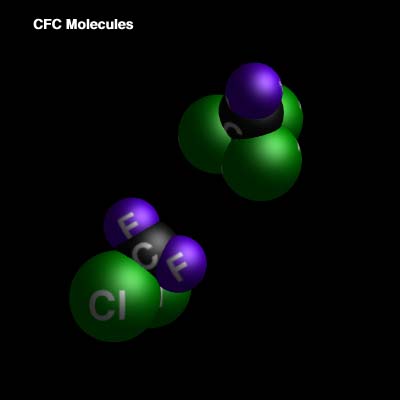Chlorofluorocarbons - CFCs
Halocarbons are the carbon-based compounds that contain chlorine, fluorine, bromine, or iodine. The compounds that only contain carbon, chlorine, and fluorine are called chlorofluorocarbons (CFCs). Chlorofluorocarbons are exclusively of industrial origin and have only been around for the past 60 years! Chlorofluorocarbons are exceptionally strong greenhouse gases and are also responsible for the destruction of stratospheric ozone. The most publicized of these compounds are those used as coolants in refrigeration and air conditioners, as propellants in spray cans and similar products, and as solvents for industrial purposes. Chlorofluorocarbons are far less abundant than carbon dioxide in the atmosphere, but they are 10,000 times more powerful as a greenhouse gas and can remain in the atmosphere for more than 45 to 100 years. Figure 12 shows the atmospheric concentrations of chlorofluorocarbons. Chlorofluorocarbons are regulated under the 1987 Montreal Protocol and are therefore not addressed in the 1997 Kyoto Protocol.
Figure 12. Two different CFC (CFC-11 and CFC-12) concentrations and growth rates from Northern Hemisphere (NH) and Southern Hemisphere (SH). Note the higher concentrations in the NH, the source of major emissions of CFCs to the atmosphere form human activities before the Montreal Protocol, relative to the SH and the decrease in the growth rate of the two gases in the atmosphere since the late 1980s. CFC concentration given in parts per trillion by volume (pptv).

